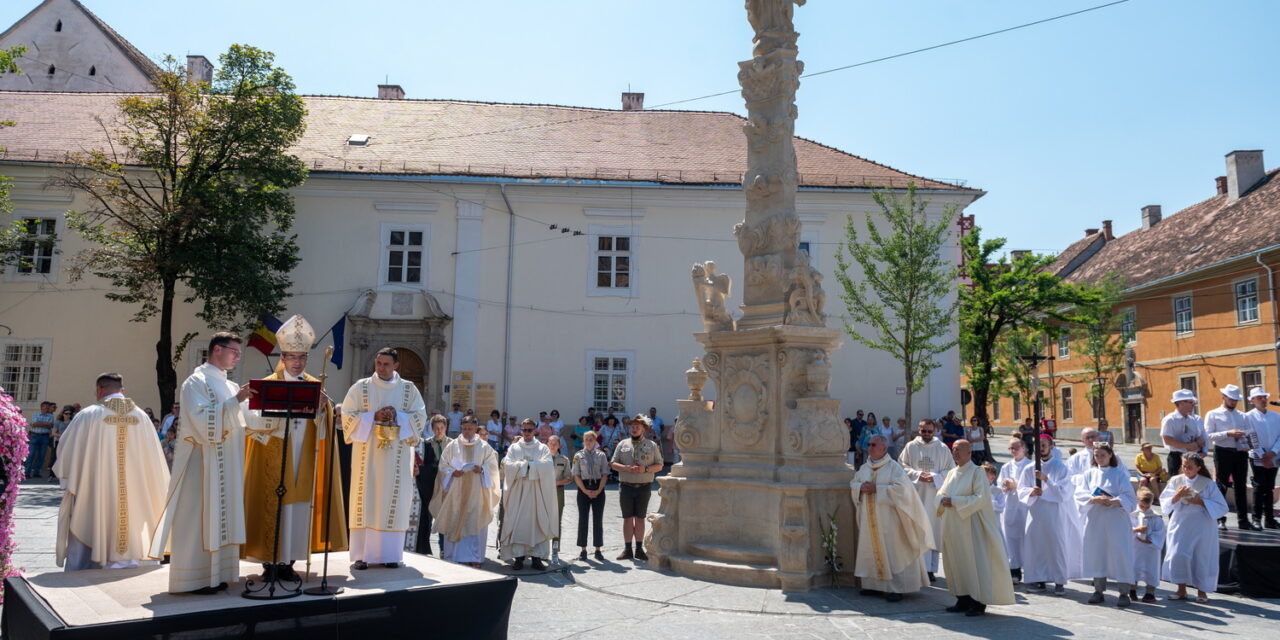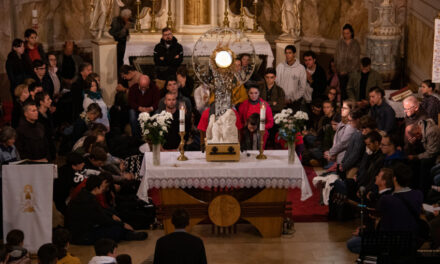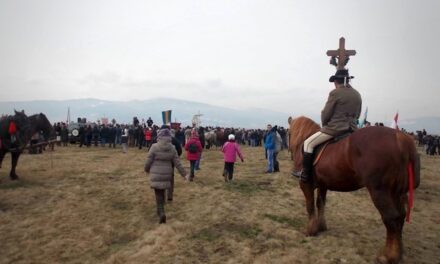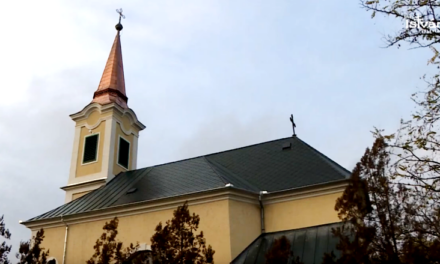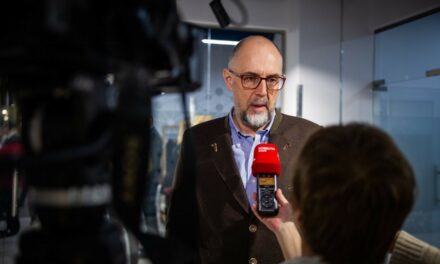A symbolic monument for the Hungarians of Cluj-Napoca and Transylvania was also moved by the communist regime for ideological reasons.
On Thursday, on the Feast of the Assumption, the Mary Column, the second oldest public monument in Transylvania, restored to the center of Cluj, in front of the Piarist church, was consecrated and blessed.
A festive event of symbolic importance for the Hungarians of Cluj-Napoca and Transylvania was also the opening of the 15th Hungarian Days in Cluj-Napoca. The baroque votive statue,
the city's oldest public work was returned to its original location after decades of "exile" thanks to the cooperation of the Hungarian community and churches, from which it was moved by the communist regime for ideological reasons.
It was consecrated and blessed by László Kerekes, the Roman Catholic auxiliary bishop of Gyulafehérvár, as part of the farewell of the Piarist church. In his homily, he emphasized: just as in the Middle Ages, during epidemics, in our self-centered world today, we need to look to Mary and model her life, since humanity is still "moving on a moral slope". The Virgin Mary is an example to follow, as she always pointed to God with her life and prayer.
"Through his life we also look to God and praise his greatness and goodness"
he said.
Archdeacon László Attila of Cluj-Napoca, parish priest of St. Michael's Church, described the holiday as a day of gratitude, thanksgiving and prayer, when the community looks to the future with confidence "beyond the turbulent times of history", and asks for strength for this. "The history of this column shows the path of the person longing for God, crying out or turning away from him," he called attention.
He recalled: the restoration of the Mary column was initiated by Balázs Gergely, the main organizer of the Hungarian Days in Cluj, in 2018 with the late Archdeacon Sándor Kovács at the municipality, the initiative was also embraced by the churches and the Romanian Hungarian Democratic Association. He especially greeted the descendants of the donating Kornis family and thanked all those who supported him "in the way the ancestors dreamed of becoming a jewel of the city, reminding of the past and the future."
Deputy mayor Emese Oláh pointed out in his speech:
the Mary column is "a symbol of hope, faith and gratitude".
Putting it back is not only a tribute to the past, but also a sign of commitment to the future, he said, underlining that such symbols "show the way for the future generation, indicate our belonging". Its restoration is a result that proves the necessity of Hungarian representation in Cluj, he said.
He explained: the renovated Farkas street and its surroundings, the Mária column, the churches here, the university and schools, the Főtér give Cluj an atmosphere that can rival that of any Western European city. "We can say that today this city has regained its former dignity, it has become a little more homely for all of us, and as a result the Funar legacy will also be dimmed," he said, referring to former mayor Gheorghe Funar, who was accused of anti-Hungarianism. He added that everything must be done to ensure that this does not change in the future, that "the ghost of the past no longer haunts the people of Cluj, and that our values are never undermined".
Architect Macalik Arnold, the designer of the renovation of Farkas and Ugyetem streets, recalled that the votive column was erected by its customer, Count Antal Kornis, after the plague, in which his father, wife and eldest daughter also lost their lives. He particularly drew attention to the importance of the space occupied by churches, schools and the university, the beauty of the Mary column, and read the prayer that was engraved on a steel plate and placed inside the Mary statue.
The statue of the Virgin Mary standing on the column is an authentic copy of the original work - the original is kept under museum conditions - while the original versions of several of the column's sculptural elements have been made public. Representatives of the Roman Catholic, Evangelical-Lutheran, Unitarian, Orthodox and Greek Catholic churches said a prayer at the Maria column.
The Mary column in Cluj is the second oldest public monument in Transylvania after the statue of St. John of Nepomuk in Sibiu. After several decades, it will return to its original location, in the small square at the intersection of University (Universitatii) and Farkas (Mihail Kogalniceanu) streets in the city center.
In 1744, an important representative of the Transylvanian Catholic aristocracy, Antal Kornis, signed a contract with the chief master of Transylvanian Baroque sculpture, Anton Schuschbauer, for its creation. The customer intended the monument as a thank-you donation for the end of the plague epidemic that began in 1738.
The baroque votive statue was demolished by the Romanian communist authorities in 1959, after its restoration, on the grounds that it obstructed vehicular traffic. From 1961, it stood in the garden of the Church of St. Peter and Paul the Apostles, located in one of the largest housing estates, closed to the public by two avenues, where it was hardly noticeable due to the heavy traffic.
The representative body decided to return it to the city center in 2018, it was part of a project aimed at transforming the city center streets into a pedestrian zone. The restoration was based on the plans of the sculptor Tibor Kolozsi, the space around the monument was designed by the architect Macalik Arnold. The restoration was carried out by stonemasons Zoltán Árpád Kiss and István Gere, sculptors André Csongor and Márton István Sipos, and ceramicist Ingrid Izabella Bede.
MTI
Cover photo: László Kerekes, auxiliary bishop of the Gyulafehérvár Roman Catholic Archdiocese (b2) at the consecration of the restored and rebuilt baroque Mary column, votive statue on the feast of the Blessed Virgin Mary in Cluj on August 15, 2024. After several decades, the second oldest votive statue in Transylvania was returned to its original place, in front of the Piarist church.
MTI/Gábor Kiss

